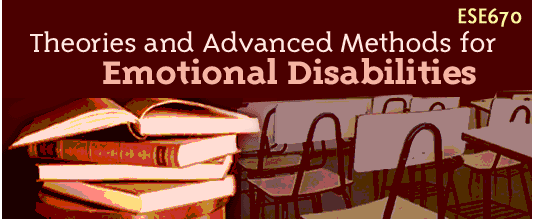
 |
|||||
| |
|
|
|
|
|
In this module you will collect, develop or create interventions that support good discipline and student development.
It is easy to get caught in the trap of reacting to challenges from students.
It is not unusual for students to wear down our resilience, and soon have us using the same somewhat useful responses when a much larger array of tools would support a sense of safety and help the student make academic as well as social and emotional progress.
Once in the classroom, under pressure, working with all your heart and mind, those creative solutions can slip away. For this module, stop and develop a series of tools from different approaches and philosophies so you have a stockpile. Then when challenged, feeling weary or uncertain about what you might do with a student, you can go to the file, flip through these ideas, and your excitement is likely to return.
These can also help colleagues and administrators if you are thorough in your work.
Here are sample directions on what you might do.
Grade Levels ______ |
Socialization |
Academics – on task |
Mood |
Strategy = S Individualization = I Novel notion =N Group activity = G |
S I N G |
S I N G |
S I N G |
At-risk LD |
|
|
|
Autism |
|
|
|
Behavior issues |
|
|
|
Communications |
|
|
|
Gifted |
|
|
|
Health issues |
|
|
|
Hearing |
|
|
|
Learning disability |
|
|
|
Mild Dev Delay |
|
|
|
Moderate DD |
|
|
|
Low Incidence |
|
|
|
Physical |
|
|
|
TBI |
|
|
|
Visual |
|
|
|
Don’t like doing that? Choose your own system. The instructor just wants you to stockpile a large number of options. How you write them up or organize them is up to you.
Remember as you collect and develop these, no matter how many ways we adapt learning activities, the critical piece is to do what is best for the student .
The STUDENT is the CRITICAL PIECE.
![]() The teacher is important
The teacher is important
![]() Content is important,
Content is important,
![]() Assessment scores are important
Assessment scores are important
![]() The community of learners is important
The community of learners is important
![]() Parents and their perceptions are important
Parents and their perceptions are important
![]() The law and regulations are important
The law and regulations are important
![]() but the student is the critical piece.
but the student is the critical piece.
Here are some examples of modifications. They do not fit the sing model, but they are a good starting place for supporting learning when youngsters have difficulty with math.
Adapting for Auditory Learners
i. Be certain to explain the directions orally before having student begin to work
ii. Provide a verbal summary of each step.
iii. During the activity, use key words to focus the student's attention to upcoming tasks, for example, "Now watch."
iv. Allow students to discuss the work as it progresses; to ask peers questions, to share insights, to provide help to one another verbally. [Sometimes you can tell who these students are by watching who "buzzes" as soon as instructions are given -- since these students often turn to others to get a repetition of directions or to say out lout - self talk - what the instructions seem to be].
Adapting for Visual Learners
i. Use concrete manipulatives or demonstrations and modeling to show students what they will need to do.
ii. Have students practice what they observed.
iii. Use mental pictures to punctuate verbal instructions.
iv. Consider using nonverbal signs to move the pace of the lesson along or as an aide to transitions in the lesson.
v. When possible, make picture cue cards or overheads showing the sequence of tasks. Use pictures and graphs to explain processes.
Adapting for Kinesthetic Learners
i. Expect students to gain insight from using manipulatives.
ii. Discuss (two-way talk) what the student is finding and extend learning by modeling some of the outcomes when a student is stumped.
iii. Pair the student with others who learn through touch and let them work in cooperative groupings, sharing insights.
iv. Use a number of different mediums for learning - rods, blocks, puzzles, glitter, food, so the student generalizes the concepts rather than identifying learning with one setting. ( Adapted from Mercer and Mercer, 1988)
Now --- off to Activity One. You are about to start your own files and complement of tools.